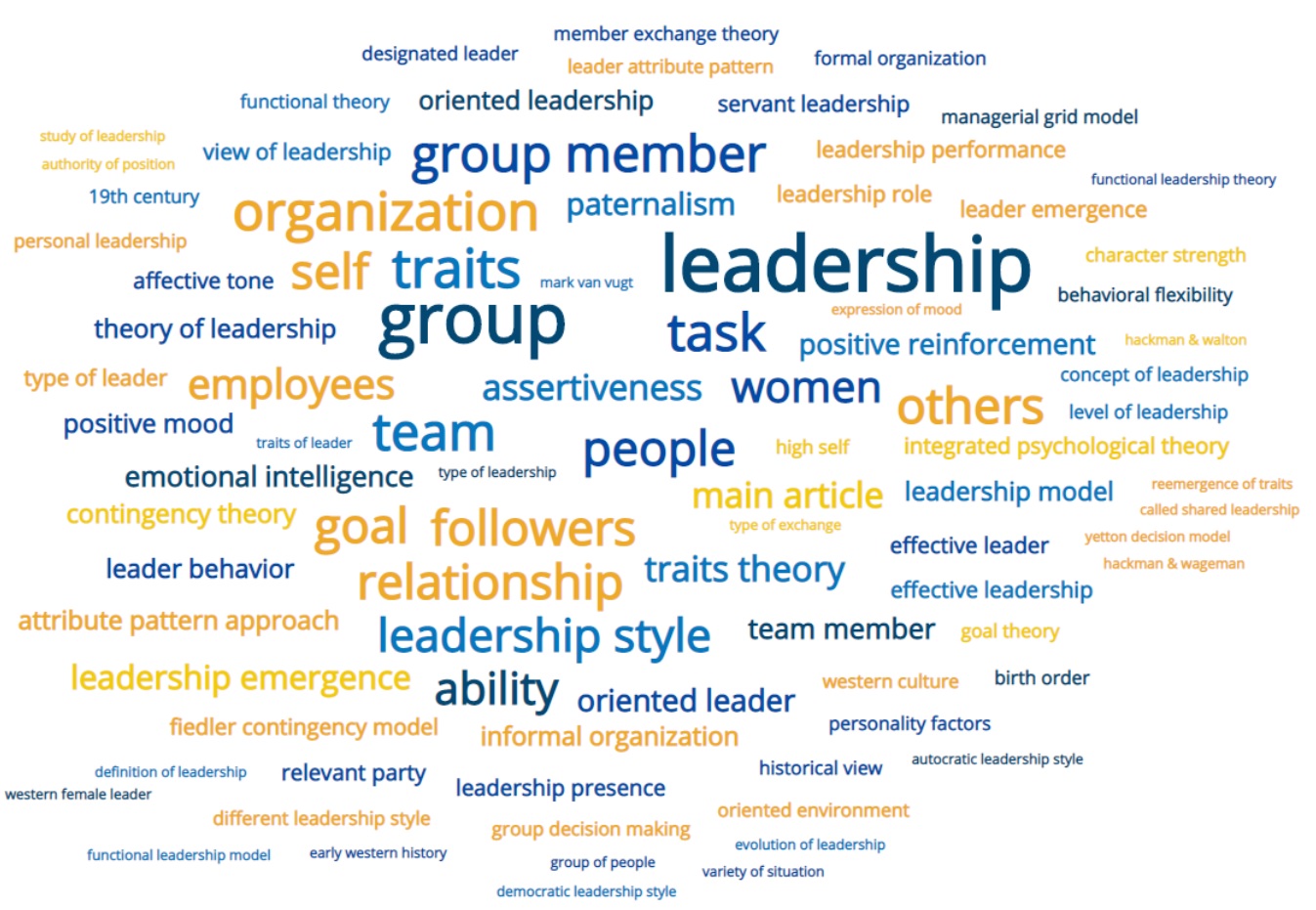Leadership in Data Science and Research
Contents
Leadership in Data Science and Research¶
Overview¶
On the one hand, data science is broadly and inclusively considered as any research driven by or conducted using data.
On the other hand, leadership is defined as specific skills “encompassing the ability of an individual or organization to lead or guide other individuals, teams, or entire organizations.” (source: Wikipedia).
When examined closely, leadership in research is essential but a challenging concept to pinpoint and often discussed as leadership skills.
The abundance of theoretical frameworks, research schools, and books that have tried to explain, define, or assess leadership skills underline the difficulty in pinpointing leadership as an entity.
However, it is also widely considered that there is no such thing as a fixed set of leadership skills as not all great leaders share the same traits or strengths [Hay20].

Fig. 89 Words that stand out in a word cloud from the Wikipedia entry about leadership¶
In the context of data science, where we strive to advance our knowledge through validated scientific methods based on data, talking about leadership, a fuzzy concept, is challenging and a rare finding.
Therefore, The Turing Way needs a chapter about leadership in data science. After all, “technical skills are just one aspect of making data science research open for all” (ref).
Leadership is considered one of the most important aspects of data science, but it is also:
one of the hardest non-technical skills to learn without guidance,
rarely discussed openly in research environments, despite being everywhere, and
healthy leadership is one of the keys to healthy and inclusive communities.
We hope that by writing about leadership, we will:
put the spotlight on a fuzzy but powerful construct,
inspire those who think leadership is not for them to review their assumptions (and maybe see themselves with abilities to lead a project),
ignite reflection and spark conversations about the leaderships we all come across in data science, and
evaluate if leadership in our workplace or communities are healthy, compassionate, and inclusive, and how we can improve it.
In this chapter, we will introduce and discuss (somewhat in an unorderly manner):
important features of leadership when experiencing and exercising them in data science,
what we mean by “healthy” leadership and a path towards it,
why structure in leadership matters and how to build it,
how to bring diversity in leadership,
how we can create leadership opportunities in our projects,
what critical aspects should be avoided in leadership,
finally, we will sprinkle all of the above with leadership examples of a diverse group of leaders to highlight how and where one can find leadership opportunities in data science.
